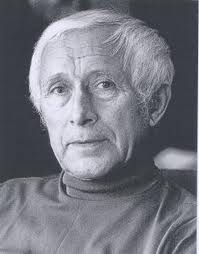Intellectual Integrity
I’ve invited readers on several occasions to compare for themselves the “intellectual integrity” of the 2-1 Indiana Court of Appeals decision that would have freed Tyrus Coleman on Double Jeopardy grounds with the “intellectual integrity” of the 5-0 Indiana Supreme Court decision reversing the Court of Appeals and reinstating Mr. Coleman’s conviction and 45 year sentence. Let’s do that together now, shall we? It won’t take long. (For the factual background of the case and boilerplate summaries of the law of collateral estoppel / issue preclusion / Double Jeopardy, you’ll need to read the decisions themselves.)
Here, in the following two paragraphs, is the entirety of the Indiana Supreme Court’s “analysis”:
Here, Coleman seems to contend that because of the brief interval between the two shootings, they necessarily amounted to a single transaction. Thus, the conclusion is that Coleman’s general fear of death or great bodily harm applied equally to Jermaine and Dye. This argument is unavailing. To begin, Coleman was charged separately with the murder of Jermaine and the attempted murder of Dye. See Appellant’s App. at 17. It is true that in the first trial, the trial court did not instruct the jury on the elements of self-defense separately with respect to each victim. See Appellant’s App. at 112. However, during summation Coleman’s counsel specifically addressed the separate shootings and argued each was justified by Coleman’s reasonable imminent fear of death or serious bodily injury from Dye, and then from Jermaine. See Tr. 1 at 378, 382-83, 388, 390-94.
Further, for the sake of argument we accept as true that the jury’s acquittal of Coleman on the murder charge in the first trial was based on its belief that Coleman acted in self-defense. But, the jury could have rationally concluded that the act of self-defense was in response to the conduct of Jermaine only. The jury was not bound to believe that Coleman likewise acted in self-defense with respect to Dye. Stated differently, the jury could very well have determined that Jermaine so threatened Coleman and others on the property that he was justified in using deadly force to protect himself and others from Jermaine. The record shows for example that an armed and agitated Jermaine had attempted to gain access to the studio in pursuit of Sharpe, and that although Coleman fired his weapon first at Dye, it was only Jermaine and not Dye who actually pointed his own weapon at Coleman. And there was testimony that Jermaine fired his weapon in Coleman’s direction. Tr. 1 at 208, 300-02. Coleman responded by firing at Jermaine resulting in fatal injury. In essence the acquittal relating to the murder of Jermaine even if based on self-defense did not amount to the jury determining that Coleman acted in self-defense with respect to the attempted murder of Dye. Thus, in retrying Coleman the State did not relitigate an issue that was necessarily decided by the jury in the first trial. Instead, the jury was asked to make the determination of whether Coleman acted in self-defense when he shot Dye. This issue was not decided during the first trial. Thus, collateral estoppel did not bar relitigation.
Here was the Court of Appeals’ analysis:
In order to acquit Coleman of murder based upon self-defense, the jury must have determined that Coleman reasonably believed that deadly force was necessary to prevent serious bodily injury to himself or third persons or the commission of a forcible felony. Because of this determination, the jury necessarily had to find that, when he shot Jermaine, Coleman was not committing a crime that was directly and immediately connected to the confrontation, that he did not provoke a fight with another person with the intent to cause bodily injury to that person, and that he had not willingly entered into a fight with another person. As the shootings of Dye and Jermaine happened within three seconds of each other, the jury’s determination must have meant that Coleman had not willingly entered into a fight with Dye, that he had not provoked a fight with Dye with the intent to cause bodily injury to Dye, and that he was not committing a crime that was directly and immediately connected to the confrontation. Stated another way, the jury must have believed that Coleman was in a place that he had a right to be; that he did not provoke, instigate, or participate willingly in the violence; and that he had a reasonable fear of death or great bodily harm. See Kimbrough, 911 N.E.2d at 635. Therefore, in acquitting Coleman of murdering Jermaine based upon self-defense in the first trial, the jury must have necessarily decided that Coleman’s use of force against Dye was also not a crime. If Coleman’s use of force against Dye was a crime, then the jury could not have reasonably determined, pursuant to the final instructions given, that Coleman’s use of force against Jermaine was justified. Thus, the doctrine of issue preclusion barred the State from re-litigating the issue of whether Coleman’s actions against Dye constituted attempted murder.
Now, let’s go back to the two paragraphs of the Supreme Court’s “analysis” in light of the Court of Appeals’ analysis.
The first paragraph rejects as “unavailing” an argument that was never made. Coleman didn’t contend that simply “because of the brief interval between the two shootings” his “general fear of death or great bodily harm applied equally to Jermaine and Dye.”
That leaves the second paragraph. Look at it closely. Its entire substance is comprised of this conclusory assertion:
[T]he jury could have rationally concluded that the act of self-defense was in response to the conduct of Jermaine only. The jury was not bound to believe that Coleman likewise acted in self-defense with respect to Dye. . . . In essence the acquittal relating to the murder of Jermaine even if based on self-defense did not amount to the jury determining that Coleman acted in self-defense with respect to the attempted murder of Dye.
Now, contrast that again with the Court of Appeals’ analysis. It’s as if the Court of Appeals had argued “Socrates is a man; All men are mortal; therefore, Socrates is mortal,” and the Supreme Court responded with “Socrates is not mortal. Because we said so.” But in this case, an innocent man is serving a 45 year prison sentence, and his children are growing up without a father, because they said so.

 Follow
Follow


















I would say that the Indiana Supreme Court’s opinion was stupid, but unfortunately they know exactly what they are doing. So words like “disgusting”, “disgraceful”, and “revolting” come to mind.
It’s their fault, not yours. Remember that.
1Yes and no. My continued hopes for this innocent man’s eventual freedom depends on the fact that it was my fault, or on a federal court. But it takes a village to fuck up something like this this badly.
2